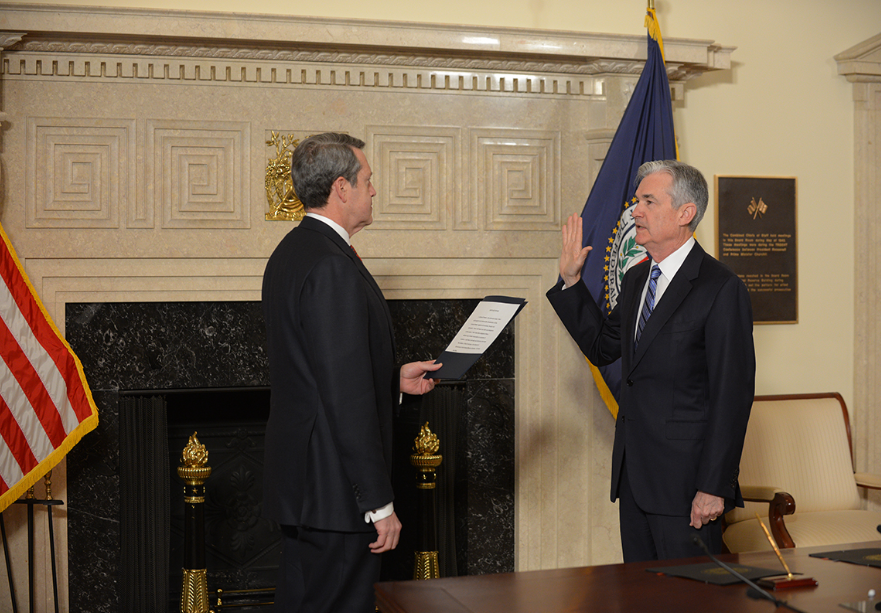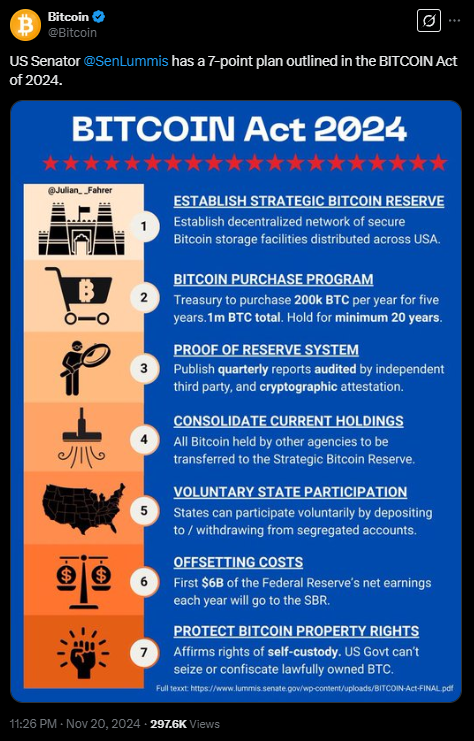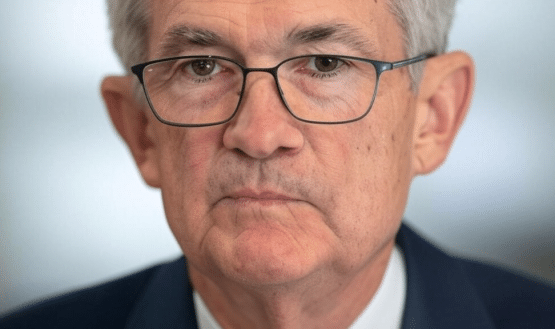On this Page:
Jerome Powell is an investment banker, a lawyer, and, since 2018, the 16th chair of the Federal Reserve. As of 2025, Jerome Powell’s net worth is estimated between $17.7 million and $54.9 million, as stated in his most recent financial filings.
Powell was first appointed to the United States Federal Reserve Board of Governors by President Barrack Obama in 2012, after which he was elevated to the position of Fed Chair by President Donald Trump in 2018.
Not only is he a highly influential figure in global finance, but he is actually the wealthiest person to hold the office since Marriner Eccles in 1948. In this post, we will discuss his rise in politics and ranks, as well as his growing fortune over the years.

Breaking Down Jerome Powell’s Net Worth in 2025
Based on his financial disclosure documents from 2019, Jerome Powell’s net worth was set between $17.7 million and $54.9 million. That same year, the Fed Chair earned $203,500 in annual salary. In comparison, other Governors earned $183,000 a year.
In 2023, Powell shared that he was earning $190,000 a year at the Federal Reserve.
Now, the $50 million figure most likely comes from a combination of these sources, plus his previous positions and roles in financial institutions. Like many people in similar high-profile roles, Powell has a large diversified investment portfolio that includes various ETFs, bonds, funds, and other similar assets.
| Asset or Income Source | Contribution to Net Worth |
|---|---|
| Bipartisan Policy Center salary | $1 |
| Fed Chair salary in 2019 | $203,500 annually |
| Fed Chair salary in 2023 | $190,000 annually |
| Private sector salaries | Undisclosed |
| Severn Capital Partners profits and stake | Undisclosed |
| Other investments and assets | Exact figure undisclosed |
| Total Net Worth | $17.7-$54.9 million |
Jerome Powell Net Worth: Early Life, Relationships and Education
Jerome Hayden Powell was born on February 4, 1953, in Washington D.C. He was one of six children born to Patricia and Jerome Powell. His father was a lawyer in a private practice, while his maternal grandfather James J. Hayden, was the Dean of the Columbus School of Law at the Catholic University of America.
Powell graduated from a Jesuit university-preparatory school, Georgetown Preparatory School, in 1971. After graduation, he enrolled at Princeton University to study political science and obtained his Bachelor’s degree in 1975.
His education journey didn’t end there. Powell spent a year working as a legislative assistant to the Republican U.S. Senator Richard Schweiker in Pennsylvania before enrolling at the Georgetown University Law Center. At the university, he was the school’s Georgetown Law Journal editor-in-chief. In 1979, he graduated with a Juris Doctor.
Jerome Powell has been married to Elissa Leonard since 1985. They have three children and reside in Chevy Chase Village in Maryland, where Elissa works as chair of the village’s board of managers.
Jerome Powell Net Worth: From Investment Banker to Business Owner to Federal Reserve Chairman
The Fed Chair has a versatile career in politics and banking. Let’s see how Powell moved the ranks over the years and what he did before he became Chair of the Federal Reserve.
Early Career Days
When he graduated from high school, Jerome Powell spent two years working as a law clerk to Judge Ellsworth Van Grafeiland at the U.S. Court of Appeals for the Second Circuit.
Following his short stint as a clerk, he entered private practice at the law firm called Davis Polk & Wardwell. In 1983, he started working at Werbel & McMillen, where he stayed for another year.
In 1984, Powell worked at Dillon, Read & Co. as an investment banker with a focus on financing, mergers and acquisitions, and merchant banking. Soon after, he was promoted to vice president at Dillon.
Moving Up Ranks in the United States Treasury
After spending six years in the investment banking sector, Powell was ready for a change. Between 1990 and 1993, he worked in the United States Department of the Treasury alongside the former chairman of Dillon, Read & Co., Nicholas F. Brady (he was the U.S. Secretary of the Treasury at the time).
In 1992, George H. W. Bush nominated Jerome Powell as the Under Secretary of the Treasury for Domestic Finance. In this position, he oversaw the sanctioning of Salomon Brothers after the scandal involving one of its traders, who submitted false bids for a U.S. Treasury security. He was also involved in the negotiations to make Warren Buffett the Salomon Brothers’ chairman.
Powell’s Return to the Private Sector
In 1993, Powell left the Treasury and returned to the private sector. He initially worked as a managing director for Bankers Trust but left the bank after it suffered reputational damage in 1995 when some transactions caused major losses to corporate clients. Upon leaving the bank, he went back to work at his old firm, Dillon, Read & Co., for two years.
Between 1997 and 2005, Powell was a managing partner at The Carlyle Group. At the group, he led the Industrial Group within the Carlyle U.S. Buyout Fund.
Founding His Own Business
In 2005, Powell decided to utilize his skills, network, and experience to found his own business. After leaving Carlyle, he founded Severn Capital Partners, a private investment firm with a focus on specialty finance and investments in the industrial sector.
In 2008, he left Severn Capital Partners to join the Global Environment Fund as a managing partner. Currently, there is limited publicly available information regarding his firm’s status or other activities.
The Global Environment Fund is a venture capital/ private equity firm that focuses on sustainable energy investments.
In 2010 and up until 2012, Powell worked as a visiting scholar at the Bipartisan Policy Center, a think tank based in Washington D.C. During this time, he played a key role in efforts to persuade Congress to raise the U.S. debt ceiling during the 2011 debt-ceiling crisis. At the time, he worked for a symbolic salary of just $1 a year.
Powell’s Work at the Federal Reserve Board of Governors
In December 2011, President Barack Obama nominated Powell, alongside Jeremy C. Stein, to the Federal Reserve Board of Governors. The dual nomination was intended to secure bipartisan support after Stein’s earlier nomination and the filibuster that came with it.
Powell’s appointment marked the first time since 1988 that a president nominated a member of the opposing party for the position.
Powell took office on May 25, 2012, filling the unexpired term of Frederic Mishkin, who had just resigned. Nearly two years later, in January 2014, Powell was nominated for a second term. The Senate confirmed Powell’s reappointment in June with a 67-24 vote.
His 14-year term was originally set to end on January 31, 2028. However, it was short-circuited in 2018 when Powell became chairman of the Federal Reserve.
Jerome Powell Becomes Federal Reserve Chairman
On November 2, 2017, President Donald Trump nominated Jerome Powell to serve as the Federal Reserve chair. He was selected to succeed Janet Yellen in the position.
His nomination went smoothly with the Senate Banking Committee approving it a month later in a 22-1 vote. He was confirmed by the Senate on January 23 the following year and assumed office as chair on February 5.

The Fed Chairman plays an incredibly important role in overseeing the United States central banking system. Beyond being the public face of the institution, the Chair of the Federal Reserve is responsible for its daily operations and the execution of its monetary policy. This includes presiding over the Board of Governors, where the key economic decisions are made, such as managing the discount window and setting interest rates.
Today, Chair Powell presents the semiannual Monetary Policy Report before the U.S. House Financial Services Committee: https://t.co/807Ho1H9Ndhttps://t.co/pgnEGEOsSt
Watch live: https://t.co/Ayw86RlcZn pic.twitter.com/QbHjw2sppi— Federal Reserve (@federalreserve) February 12, 2025
During his tenure under President Donald Trump, Powell raised interest rates to manage economic growth but faced quite the criticism from the president, who even considered firing him. His attempt at quantitative tightening in 2018 led to market volatility, which forced him to reverse course in 2019.
When the COVID-19 crisis hit, Powell launched aggressive stimulus measures, including direct lending and corporate bond purchases – all of which earned him rare bipartisan praise. However, economists agree that his policies fueled asset price inflation and created what some consider to be the biggest financial bubble in history.
Powell’s monetary policy, including massive asset purchases and low interest rates, also likely contributed to the rise of cryptocurrency prices during the pandemic. This put Powell at the top of the 2020 Forbes Person of the Year in Crypto list.
Powell’s Work at the Federal Reserve in Recent Years
During the reign of President Joe Biden, Powell downplayed housing bubble concerns in 2021 and initially saw inflation as a temporary problem. However, inflation surged to its highest levels since 1982 and as a result, it signaled rate hikes starting March 2022.
After the inflation problem, Powell’s reappointment as Federal Reserve Chairman faced opposition from progressive Democrats. Elizabeth Warren, one of the most progressive members of the Senate, called him a “dangerous man” for his past actions and regulatory stance, arguing that Powell’s inflationary actions harmed regular Americans just to inflate asset prices for the sake of big banks and corporations.
Despite the opposition, President Joe Biden renominated him in November 2021. The Senate confirmed his second term in May 2022 with an 80-19 vote.
Jerome Powell is currently serving his second term as the Federal Reserve Chairman, a position he began in May 2022. His term expires in 2026, with the potential to be nominated again by the sitting president.
Board Memberships and Philanthropic Involvement
In 2010, Powell served on the board of governors at the Chevy Chase Club, a country club. Additionally, he has been involved with several charitable and educational organizations.
For instance, Powell has been a member of the boards of D.C. Prep, a public charter school, the Bendheim Center for Finance at Princeton University, and The Nature Conservancy.
He is also a founding member of the Center City Consortium, an initiative focused on supporting 16 parochial schools in Washington D.C.’s most underserved areas.
Jerome Powell’s Stance on Cryptocurrencies
Powell has consistently advocated for a more balanced approach to cryptocurrency regulation. He has long spoken about the need for clear frameworks to protect consumers and expressed concerns about the risks associated with digital assets. Despite his reservations, he has acknowledged the growth of digital assets and their role in the financial system.
As a major force in the financial industry, Powell’s statements about cryptocurrencies over the years have been quite influential, and the new Securities and Exchange Commission (SEC) administration seems to hold similar beliefs.
Crypto investors make sure to listen every time Powell speaks publicly because his words often have a major impact on the industry. Take, for instance, his speech from October 2024. Bitcoin and Ethereum, the crypto market leaders, experienced a slight pullback ahead of his speech as traders worried that interest rates wouldn’t be cut. Similarly, after he signaled rate cuts in August 2024, Bitcoin’s price surged 5%.
Despite Powell’s influence over the digital asset market, he doesn’t seem to be a big fan of them himself. In 2021, he warned American citizens of the risks that come with trading cryptocurrencies, talking about Bitcoin specifically:
“People use bitcoin as a speculative asset,” Powell told CNBC’s Andrew Ross Sorkin. “It’s just like gold, only it’s virtual, it’s digital. People are not using it as a form of payment or as a store of value. It’s highly volatile. It’s not a competitor for the dollar, it’s really a competitor for gold.”
As of February 2025, the concept of a U.S. Strategic Bitcoin Reserve has gained quite a bit of momentum, especially after President Donald Trump’s election. In December 2024, President Trump signed an executive order establishing a digital asset group that is tasked with exploring the creation of a national crypto stockpile.
In January 2025, Senator Cynthia Lummis introduced the “Bitcoin Act of 2024,” proposing that the U.S. Treasury purchase one million Bitcoins over five years, holding them for at least 20 years.

However, the Federal Reserve has expressed its reservations about holding Bitcoin. In December 2024, Powell addressed the concept of a United States Bitcoin Reserve. He shared that the Federal Reserve is not permitted to own Bitcoin and has no intention of changing its stance.
“That’s the kind of thing for Congress to consider, but we are not looking for a law change at the Fed,” Powell said.
This comment dented the value of the coin, which has then rallied sharply along with other cryptocurrencies since Trump’s victory in the election.
Now, despite his initial criticism and statement from December 2024, Powell has recently made statements that indicate that the Federal Reserve is now more open to the potential of stablecoins.
Powell’s acknowledgment of the issues surrounding de-banking represents a shift toward recognizing and integrating crypto-related financial activities. Naturally, these are just offhand comments, and it is yet to be seen whether real change will be made.
After Jerome Powell spoke at the Fed’s annual summit in Jackson Hole, Wyoming, in January 2025, signaling that the central bank is likely to lower its key interest rate soon, Bitcoin’s price jumped over 2% in only 24 hours.
Lessons to Learn from the Federal Reserve Chairman
Jerome Powell’s long and esteemed career offers several lessons for just about everyone, even if you aren’t interested in finance and economics. His ability to pivot between roles – whether in the private sector or the public service – shows the importance of being adaptable in life. Moving across industries and taking on new jobs and challenges allowed Powell to build a diverse skill set.
Powell’s tenure at the Federal Reserve exemplifies the weight of making strategic decisions in high positions. His ability to remain calm and make tough decisions during crises and hard periods has been a defining feature of his leadership. The key takeaway here is the importance of staying grounded in your principles while responding to external pressures.
FAQs
What is Jerome Powell's net worth in 2025?
Jerome Powell's net worth is between $17.7 million and $54.9 million as of 2025. This is based on his financial filings and assets disclosed over the years.
Does Jerome Powell own any companies?
Powell is the founder of Severn Capital Partners, a private investment firm. However, limited public information is available about his status at the firm or the firm's current activities.
When does Powell's term as Federal Reserve Chairman end?
Jerome Powell is currently serving his second term as Chairman of the Federal Reserve, which is set to end in 2026.
Can Powell be reappointed as Chairman?
Yes. Powell can be reappointed for another term depending on the decision of the sitting U.S. president after his current term expires.

